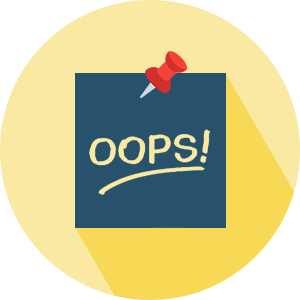When I was a student, I once had the honour of giving a presentation to the board of directors of a Fortune 500 company. In this presentation me and my project group proposed multiple recommendations in order to improve their communication efforts. This was one of my first big presentations, so naturally I was a bit nervous. This feeling caused me to refer to their communication efforts as “shit”. In all honesty, those communication efforts were certainly suboptimal, but my choice of words was even more so. I can still hear my group leader grunting loudly in the background when I think of it.
Posted in Archive, Advertising
published on Wednesday, 18 March 2020
When in Italy, my father-in-law has a proven technique for finding the best wine in the supermarket: By checking which shelf is the emptiest, he knows which wine is being drunk by the locals and thus is the best to get at that moment. In other words, he gladly uses the scarcity principle when being confronted with many choices in a fairly new and uncertain environment.
Posted in Archive, Strategy
published on Friday, 06 March 2020
If you need to buy a running T-shirt, which one would you choose? One with a solid, neutral color or one with a bright, colorful pattern? Which choice will give you more satisfaction one year later?
Research has found that our buying decisions are often inconsistent with what we prefer in the long run. Most people tend to choose T-shirts with a simple design and a neutral color, believing they would be happier with their choices later. However, in reality, people experience more long-lasting satisfaction with bolder, attention-catching designs and colors.
Posted in Archive, Strategy
published on Wednesday, 18 September 2019
A box of chocolates weighs 500 grams. The hotel is only a 400 meter walk away from the center. The mansion is over 6,000-square-foot big. From weight to size or distance; customers are constantly exposed to quantitative information in their decision making.
However, as it turns out, our brain is awful at processing this quantitative information. We prefer information to be more discrete and sparking the imagination, say a box of 10 chocolates, a hotel that’s only a 5-minute walk away from the center, or a mansion of 10 bedrooms…
This finding applies to other quantitative information as well and has intriguing implications for nudging consumer behavior both for marketeers as well as public policy makers.
Posted in Archive, Strategy
published on Wednesday, 04 September 2019
What is your budget? What is your bid? How much would you like to donate?
These questions have become quite commonplace online; customers are asked to choose what they would like to pay, rather than are provided with a pre-set value. For instance, eBay allows customers to bid on listed items, whereas charity website Doctors Without Borders allows donors to enter a chosen donation amount.
Customers are prompted to indicate their chosen value either via an open-ended text box or a slider scale. With the recent boost in popularity of online transactions via mobile phones, organizations have increasingly turned to the use of slider scales rather than text boxes to register monetary values.
But how has this switch to sliders affected customers’ payments? Do payment responses differ for text boxes and slider scales? As it turns out; yes, they certainly do!
Posted in Archive, Conversion
published on Wednesday, 07 August 2019





